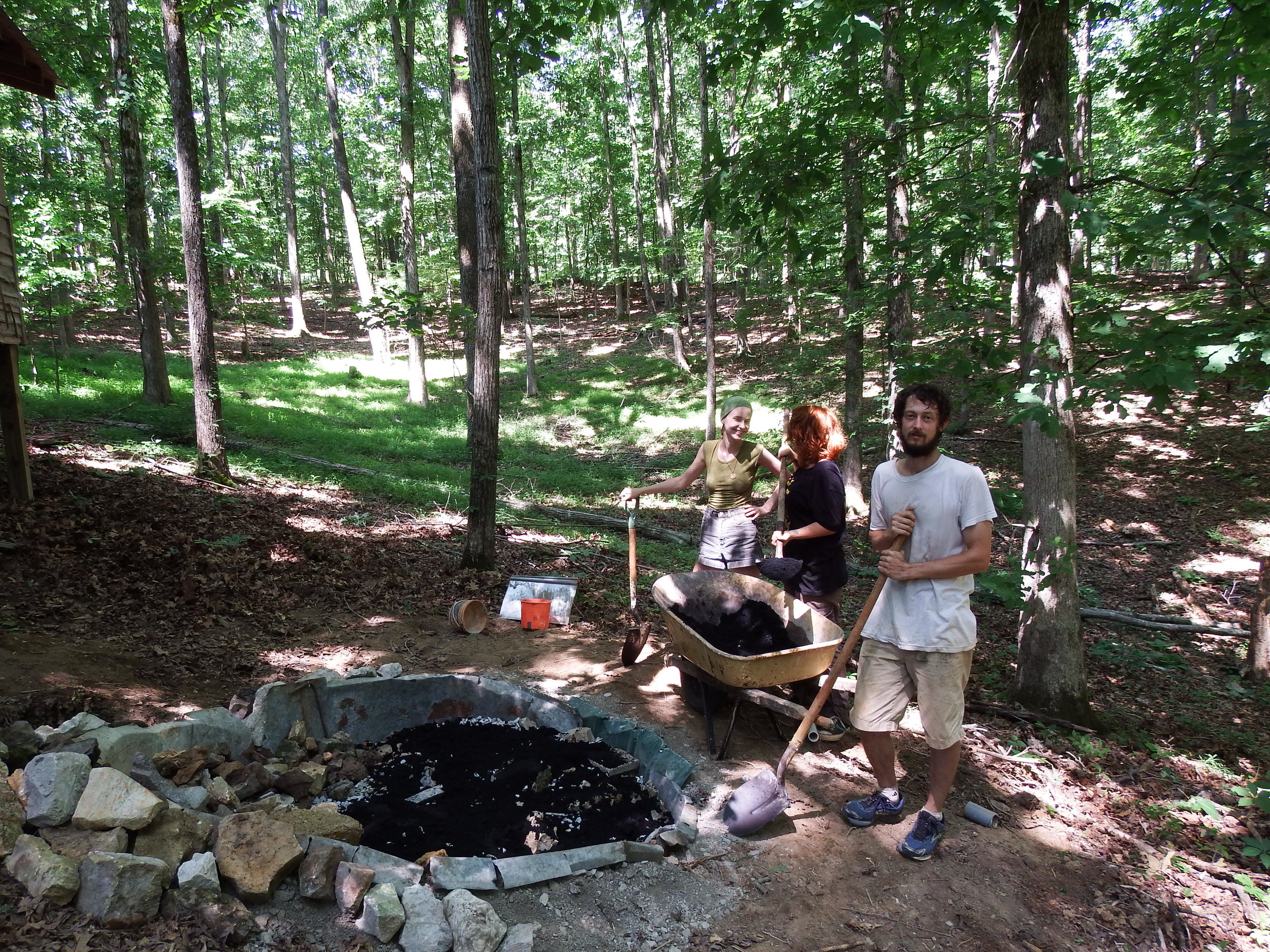Below is a description by one of my first apprentices, Zoe York. She studied at the Ecovillage Training Center, The Farm, Summertown, TN for three months and completed a boifilter as her personal project. It was a privilege and honor to pass along some of my knowledge and passion to such a driven individual.
Zoe York and Hayley Joyell SMith
At the Ecovillage Training Center remodeling was underway. The beautiful Gaia cabin needed a small kitchen. This solar powered, naturally built structure was poised to have an efficient and effective water system; thus, the birth of my first biofilter. It began with drawing sketches, to digging holes, laying pipe, and ended with the completion of an environmentally friendly way to remediate the grey water coming from the kitchen sink.
Grey water should not freely flow onto the ground, or be left standing where it can come into contact with humans or wildlife; it potentially harbors a variety of pathogens and compounds that one does not want to force on the surrounding ecosystem. However, it is an incredible resource, that when handled properly, can help close the loop on an aspect of nutrient cycling that humans have removed themselves from.
biochar made from the bamboo that grows abundantly at the ecovillage
Rocks are prolific in the environment, Biochar is easily made, and sand is stored on site for natural building purposes; great materials for a sedimentary biofilter. Using materials already present on the property saved financial investment and labor.
“The ETC prides itself on the use of salvaged and sustainably sourced material and inspired me to do the same with my design. ~Zoe York”
The biofilter was designed to interact with the water flow of nearby structures. Rain that would run off the roof of The Prancing Poet and Gaia Cabin and flows downhill towards the biofilter, this water is diverted rather than accommodated. A flow form was made. A raindrop, its apex directed uphill, would divert water flowing above ground from entering the biofilter. The teardrop shape was then dug into the ground, along with the trench for the pvc from the sink. The floor of the biofilter was leveled, and the grade of the trench checked.
Tin scavenged from an area of the Ecovillage reserved for excess materials from previous projects, was cut and used to line the taller walls of the biofilter, to help retain its form and hopefully prevent the invasion of nearby roots. An outlet was made for the drain pipe. The bottom was removed from a 1 gallon bucket, a hole created to accommodate the pvc, and the wall perforated using a drill and paddle bit. The pvc was then placed through the gallon bucket, and surrounded with gravel and hardware fabric. This design allowed the grey water to slowly sink through the sedimentary system without being exposed.
The biofilter’s floor was filled with large river rock, collected on the property. The large rocks were covered with a layer of gravel, Biochar, and finally a layer of sand. Large river rocks bordered the flow form, disguising the sheet metal and making the biofilter more pleasing to the eye.
This biofilter keeps grey water from pooling above ground, filters the water through a sedimentary system before allowing it to slowly proliferate into the ground, keeping it from entering a freshwater source and allowing organic matter to compost in the soil. This system, however, does have limitations. Biodegradable soap and cleaners should be used as inorganic compounds will not compost properly in the soil. There is no grease trap since this system was designed for a plant-based kitchen with few inhabitants.
his simple design can easily be modified to accommodate different lifestyles and number of users. A grease trap could be made for the kitchen. Secondary overflow may be required depending on your site. Different materials can be used to facilitate the remediation process. Referencing Permaculture principles to utilize what resources are available, adjusting to landscape and other factors impacting the biofilter functionality dictate the overall design and what will function well for your site.
Biofilter six months after completion.








